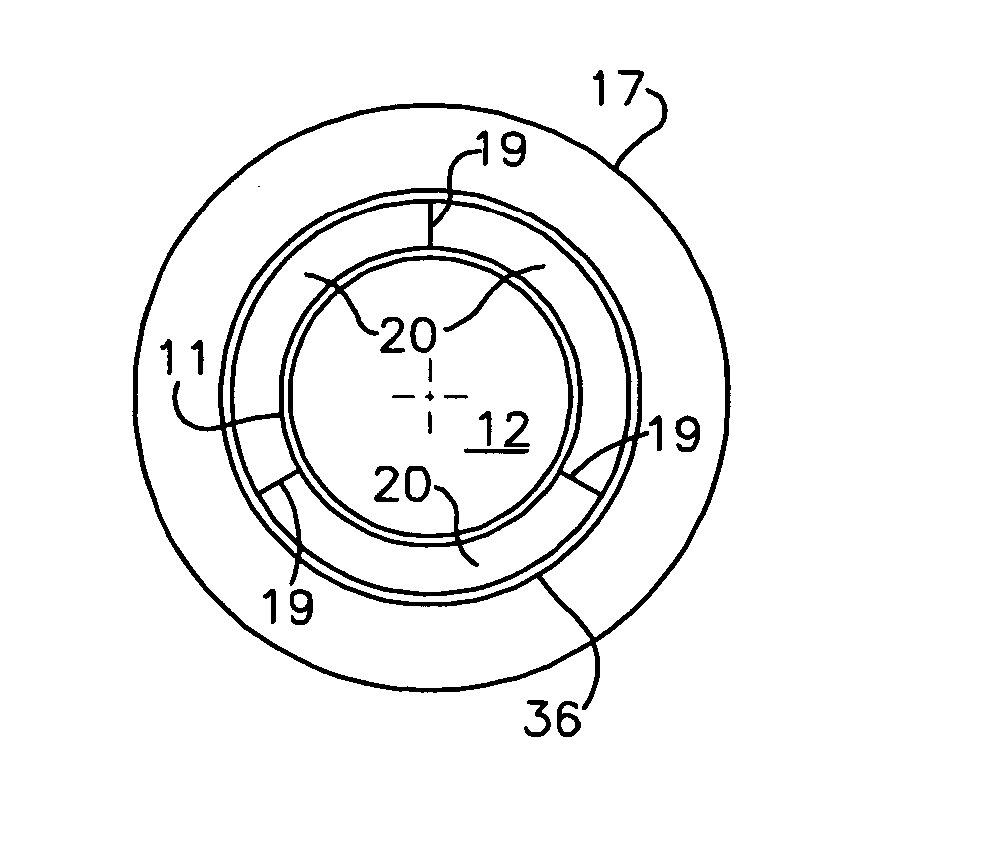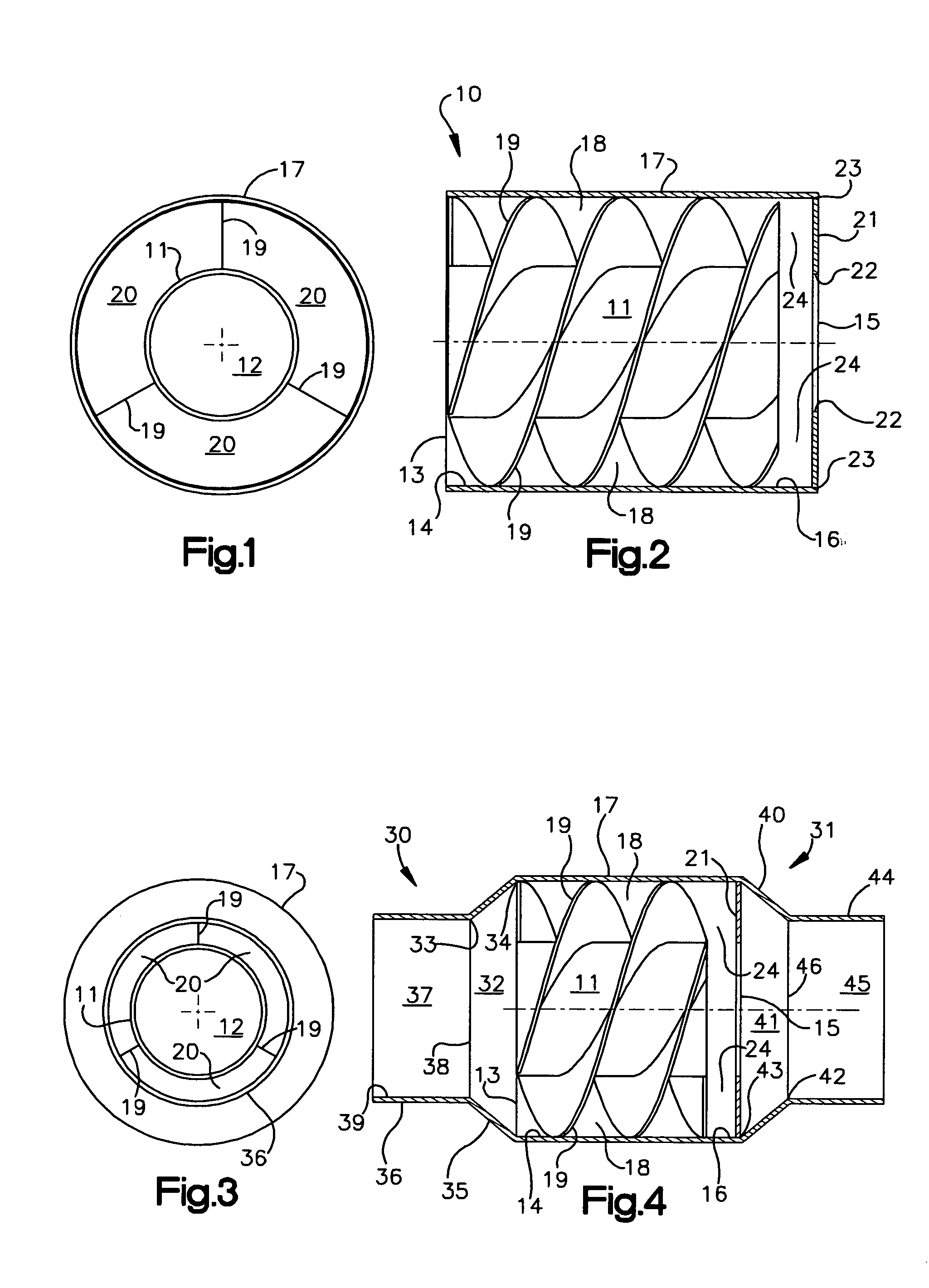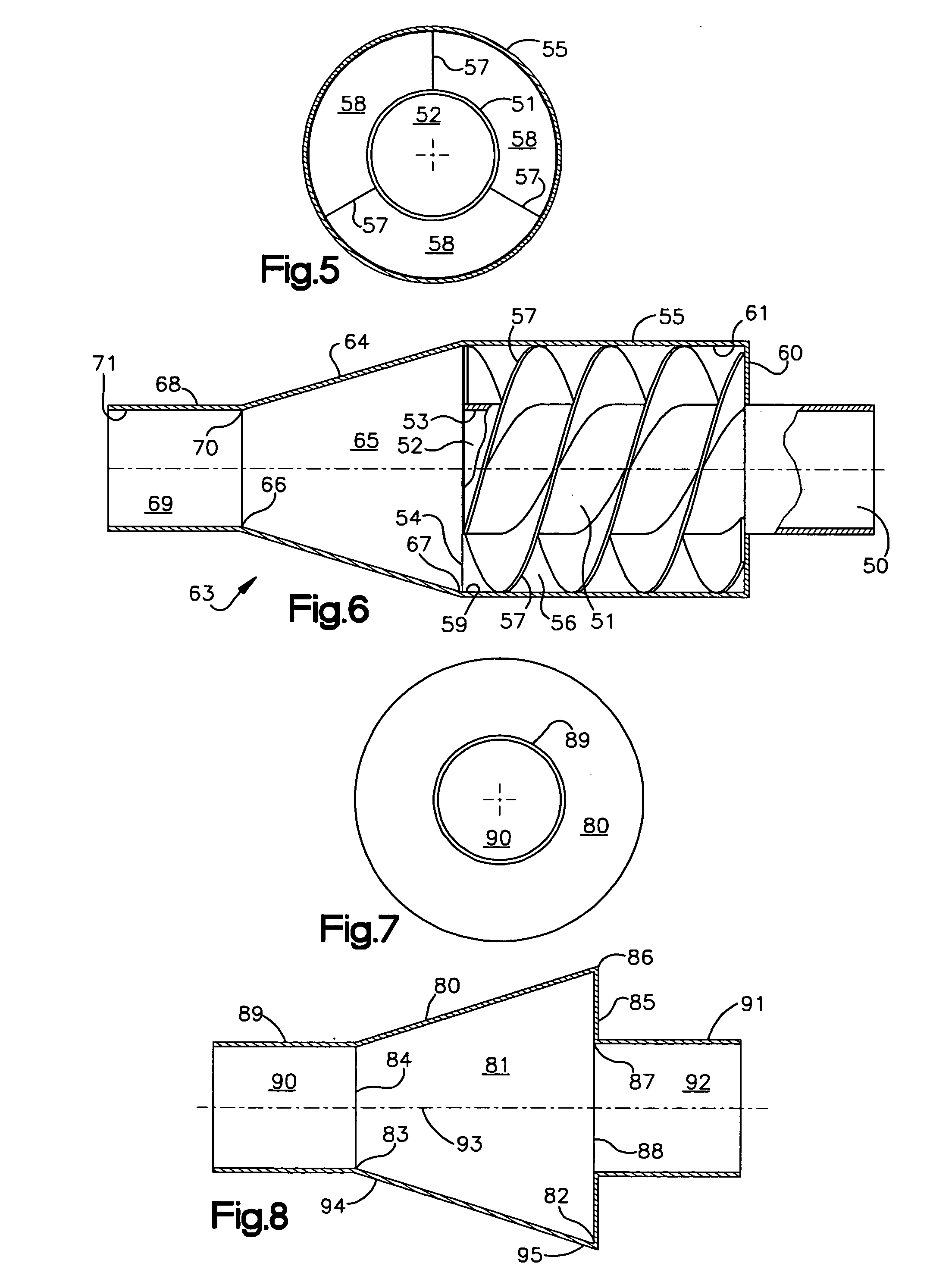Devices for regulating pressure and flow pulses
a technology of flow pulses and regulating devices, which is applied in the direction of machines/engines, positive displacement liquid engines, exhaust treatment, etc., can solve the problems of adversely affecting increasing the pressure differential between and enhancing the internal and external pressures of the regulating device. , to achieve the effect of enhancing the operation efficiency of the source, reducing the noise generated, and reducing the nois
- Summary
- Abstract
- Description
- Claims
- Application Information
AI Technical Summary
Benefits of technology
Problems solved by technology
Method used
Image
Examples
first embodiment
[0024] Means are located in the annular space 18 between the first and second enclosures 11 and 17, respectively, for establishing in the annular space at least one second passageway in the form of a helical passageway that extends between the opening 13 in the entry end14 of the device and a location short of the opening 15 in the exit end 16 of the device. In the invention illustrated in FIGS. 1 and 2, the means for establishing at least one second passageway comprises three vanes 19, each of which is helically wound around the exterior of the cylindrical shell 11 along the entire length of the shell. Adjacent ones of the vanes 19 are spaced apart an equal distance so as to form three substantially identical helical passageways 20 in the annular space 18, each helical passageway having a length greater than the first passageway. It will be understood by those skilled in the art based on the description herein that less than or more than three vanes can be used and the passageways ...
second embodiment
[0033] In the invention shown in FIGS. 3 and 4, the device 10, as described above, includes, in addition, an inlet end, indicated generally at 30, and an outlet end, indicated generally at 31. The inlet end 30 includes a third enclosure 35 that defines a third passageway 32 that has the configuration of a truncated cone with a truncated end 33 and a base end 34. The cross-sectional area of the base end 34 of the third passageway 32 is approximately equal to the cross-sectional area of the opening 13 in the entry end 14. The third enclosure 35 at the base end 34 of the third passageway 32 is connected to the second enclosure 17 so that the base end 34 of the third passageway 32 adjoins the opening 13 in the entry end 14 in a face-to-face relationship. The inlet end 30 also includes a fourth enclosure 36 that defines a fourth passageway 37 having the configuration of a cylinder. One end 38 of the fourth enclosure 36 is connected to the third enclosure 35 at the truncated end 33 of the...
fourth embodiment
[0043] the invention, as illustrated in FIGS. 7 and 8, also includes a second enclosure 89 that defines a second passageway 90 that has the configuration of a cylinder with a cross-sectional area that is preferably equal to the cross-sectional area of the opening 84 in the entry end 94 of the device. The second enclosure 89 is connected at one end to the first enclosure at the truncated end 83 of the first passageway 81 so that the second passageway 90 provides for fluid communication between the engine and the opening 84 in the entry end 94 of the device. A third enclosure 91 defines a third passageway 92 that has the configuration of a cylinder with a cross-sectional area that is preferably equal to the cross-sectional area of the opening 88 in the exit end 95 of the device. The third enclosure 91 is connected to the inner circumference 87 of the annulus 85 so that the third passageway 92 provides for fluid communication from the opening 88 in the exit end 95 of the device away fr...
PUM
 Login to View More
Login to View More Abstract
Description
Claims
Application Information
 Login to View More
Login to View More - R&D
- Intellectual Property
- Life Sciences
- Materials
- Tech Scout
- Unparalleled Data Quality
- Higher Quality Content
- 60% Fewer Hallucinations
Browse by: Latest US Patents, China's latest patents, Technical Efficacy Thesaurus, Application Domain, Technology Topic, Popular Technical Reports.
© 2025 PatSnap. All rights reserved.Legal|Privacy policy|Modern Slavery Act Transparency Statement|Sitemap|About US| Contact US: help@patsnap.com



